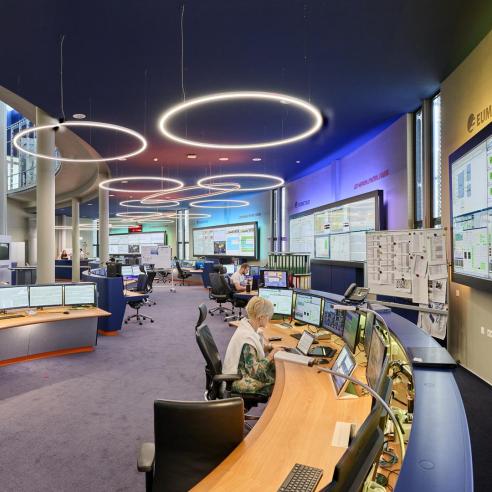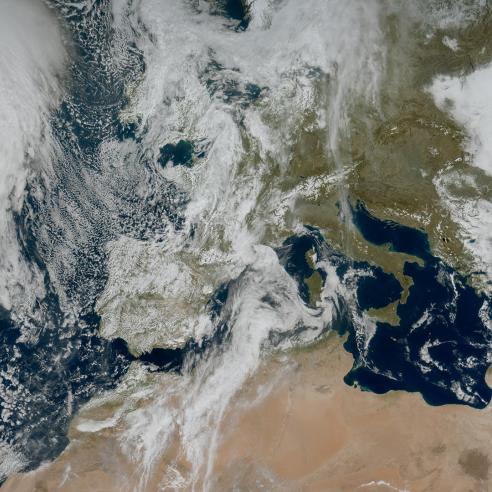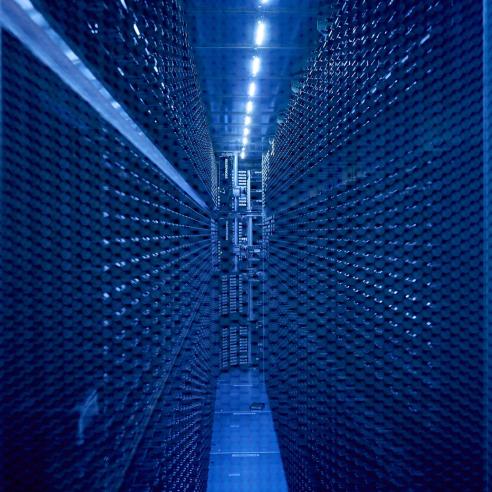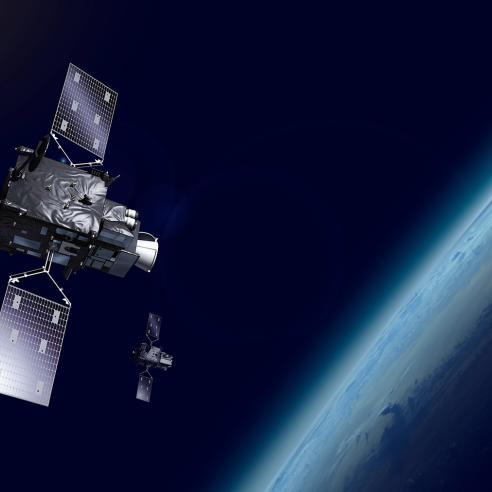10 January 2024
27 October 2023
Commands from the Mission Control Centre in Darmstadt, Germany, are sent via antennas at our ground stations to the satellites. Telemetry, which is information from the satellites, is sent from the spacecraft to the ground stations and relayed to mission control. The antennas at the ground stations also track the satellites to ensure commands can be sent to the satellites and telemetry can be received.
Telemetry
Telemetry is the information the mission control centre at EUMETSAT’s headquarters receives from the satellites.
Telemetry includes information about the status of the satellite and its instruments, enabling operations teams to see if the spacecraft and its payload are healthy or whether there is an anomaly, such as overheating of a battery, for example. The telemetry is received digitally and converted at headquarters into engineering values.
Telemetry also includes the data produced by the satellite’s instruments. The raw data are received in digital form and converted on the ground at headquarters into real values.
Tracking
Antennas at the ground stations can only “see” low-Earth-orbiting satellites when they pass within their range on each orbit. For that reason, very precise information is needed about the satellites’ position, so that the antenna can be pointed to the correct place to be able to relay commands and receive telemetry.
The EUMETSAT Mission Control Centre sends this information to the ground stations, so that the antennas can “lock on to” the satellite to send and receive information.
The situation for geostationary satellites is different. Their positions are well known and each has an assigned place on the geostationary orbit. However, the satellites “drift” slightly, so tracking is carried out to determine if and when drift correction manoeuvres are needed to efficiently maintain the satellites in their assigned position.
Control
Routine operations of satellites require commands to be sent to the spacecraft to control them and the instruments in their payloads. For example, commands are sent to low-Earth-orbiting satellites to tell them when their sensors should expect to see the sun, as this can change due to the time of the year.
Sometimes, far more complex series of commands are needed, for example, when the geostationary satellite Meteosat-9 was moved from its position observing Europe and Africa to take up a new position over the Indian Ocean in 2022.
Increasingly, special collision avoidance manoeuvres are required to temporarily change a satellite’s position so that it is not hit and damaged by space debris.
These commands, whether routine or something out of the ordinary, are sent from the control centre to the satellites via the ground stations.
Meteosat Second Generation
The primary ground stations for the Meteosat Second Generation (MSG) satellites are at Fucino, Italy, and Cheia, Romania.
The ground stations are the main channel of communications between the Mission Control Centre and the MSG satellites. The ground stations are monitored and controlled remotely from the control centre in Darmstadt. EUMETSAT controls and monitors the MSG satellites by communicating via these ground stations.
Meteosat Third Generation
The telemetry, tracking and control remote ground stations are located in in Fucino, Italy, and Cheia, Romania, and support the safe monitoring and control of the MTG fleet.
The mission data acquisition remote ground stations are located in Lario, Italy, and Leuk, Switzerland. The instrument, or payload, data are received by the stations and then sent to the EUMETSAT Mission Control Centre for processing.
EUMETSAT Polar System
EUMETSAT controls its Metop satellites by sending commands via the EUMETSAT Polar System (EPS) ground station, which is located on Spitsbergen, Svalbard, Norway (78°N). There are two separate command and data acquisition antennas, each with the capacity to monitor and command the Metop satellites and to receive data from every orbit.
The US National Oceanic and Atmospheric Administration’s mission control centre in Washington, DC, also has the opportunity to monitor and control its satellites via the Svalbard ground station. The NOAA Fairbanks station provides a similar service for Metop, complementing the service provided by the European Space Agency Satellite Operations Centre with part of its network of s-band stations, if the Svalbard ground station should become unavailable.
Copernicus Sentinel-3
The Copernicus Sentinel-3A and -3B satellites are controlled from EUMETSAT’s Darmstadt headquarters via a telemetry, tracking and control s-band service provided by the European Space Agency. The most regularly used ground stations are located in Kiruna and Svalbard. Two passes per day are available for each satellite. These passes enable commands to be sent to the satellite and instrument status information to be retrieved so that the control centre can monitor the spacecraft and payload.
Both spacecraft are highly autonomous and can operate for some time without intervention from the EUMETSAT teams.
Copernicus Sentinel-6
The Copernicus Sentinel-6 Michael Freilich satellite is controlled from EUMETSAT’s Darmstadt headquarters via a combination of the s-band European ground station service located in Kiruna and the United States’ National Oceanic and Atmospheric Administration’s ground stations located in Fairbanks.
Telemetry is received from each of the 14 to 15 passes of the satellite per day, however only two passes per day are allocated for spacecraft commanding in normal conditions. During each pass, the satellite and instrument status information is automatically retrieved so that the control centre can monitor the spacecraft and payload.
The satellite is autonomous and can operate for some time without intervention from the EUMETSAT team.
Jason-3
The Jason-3 satellite is monitored and controlled by the US National Oceanic and Atmospheric Administration’s Satellite Operations Control Centre and the French Space Agency’s (CNES) Satellite Command Control Centre using either the NOAA ground stations at Fairbanks and Barrow (Alaska, US) and Wallops (Viginia, US) or the EUMETSAT ground stations at Usingen (Germany).







